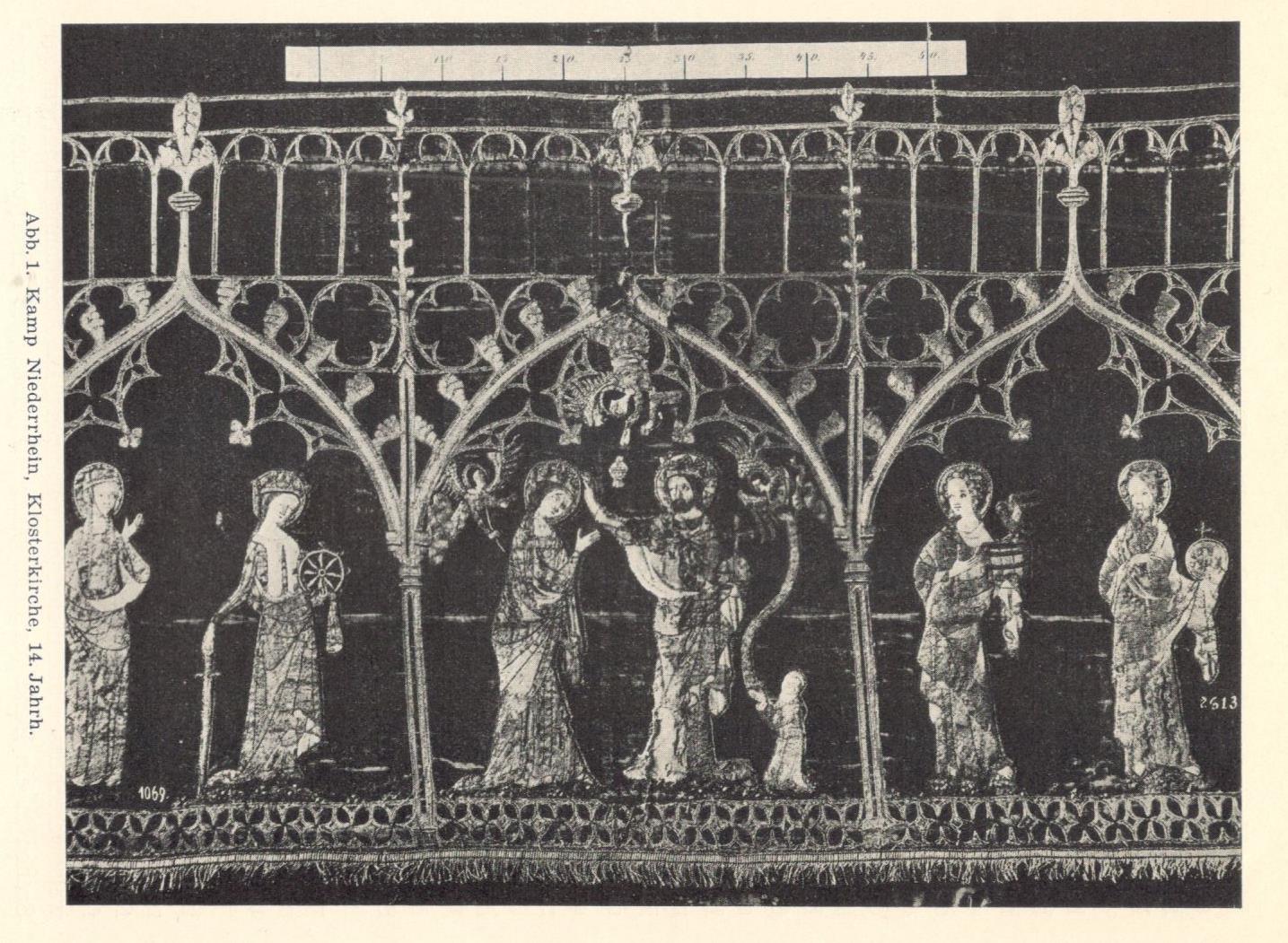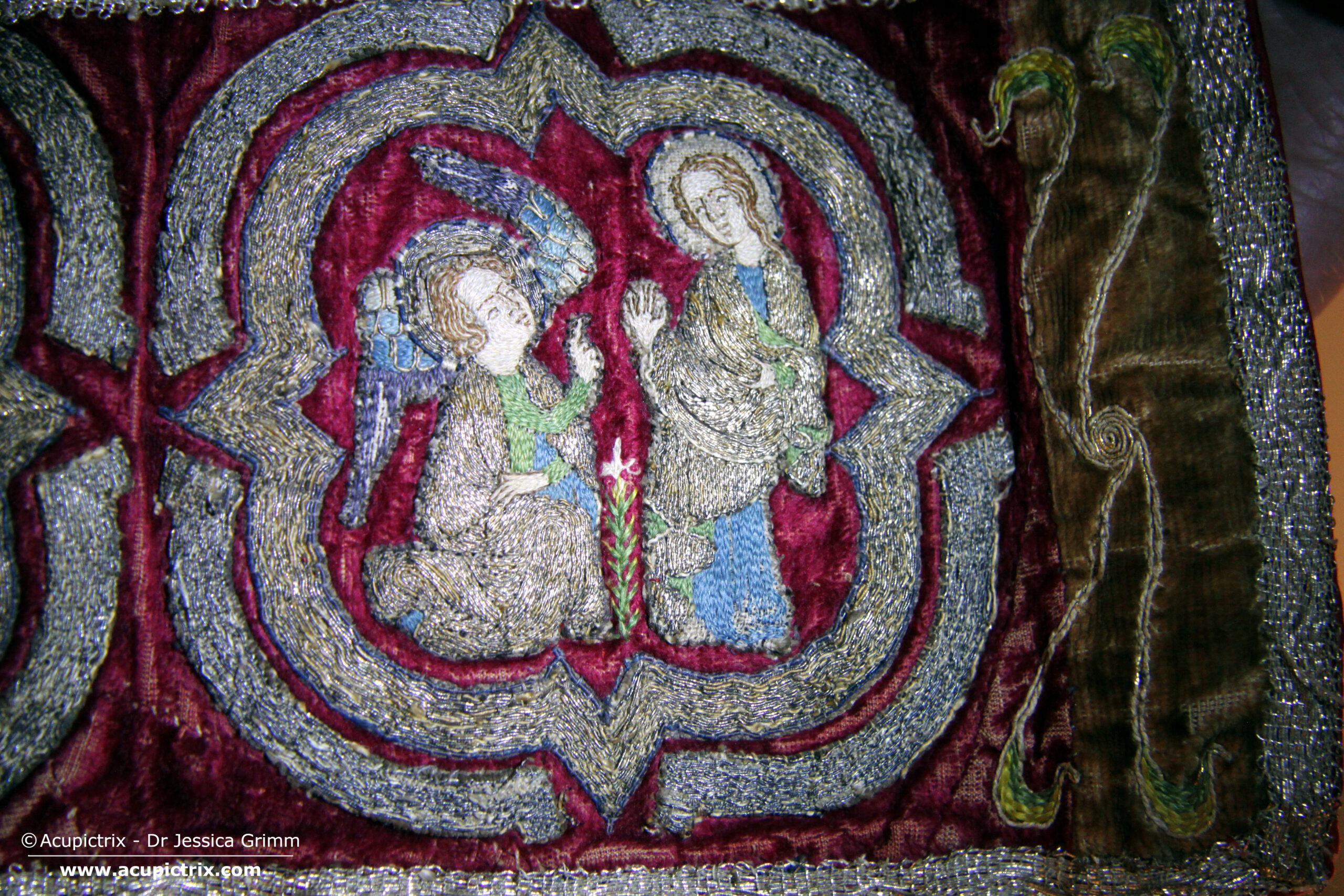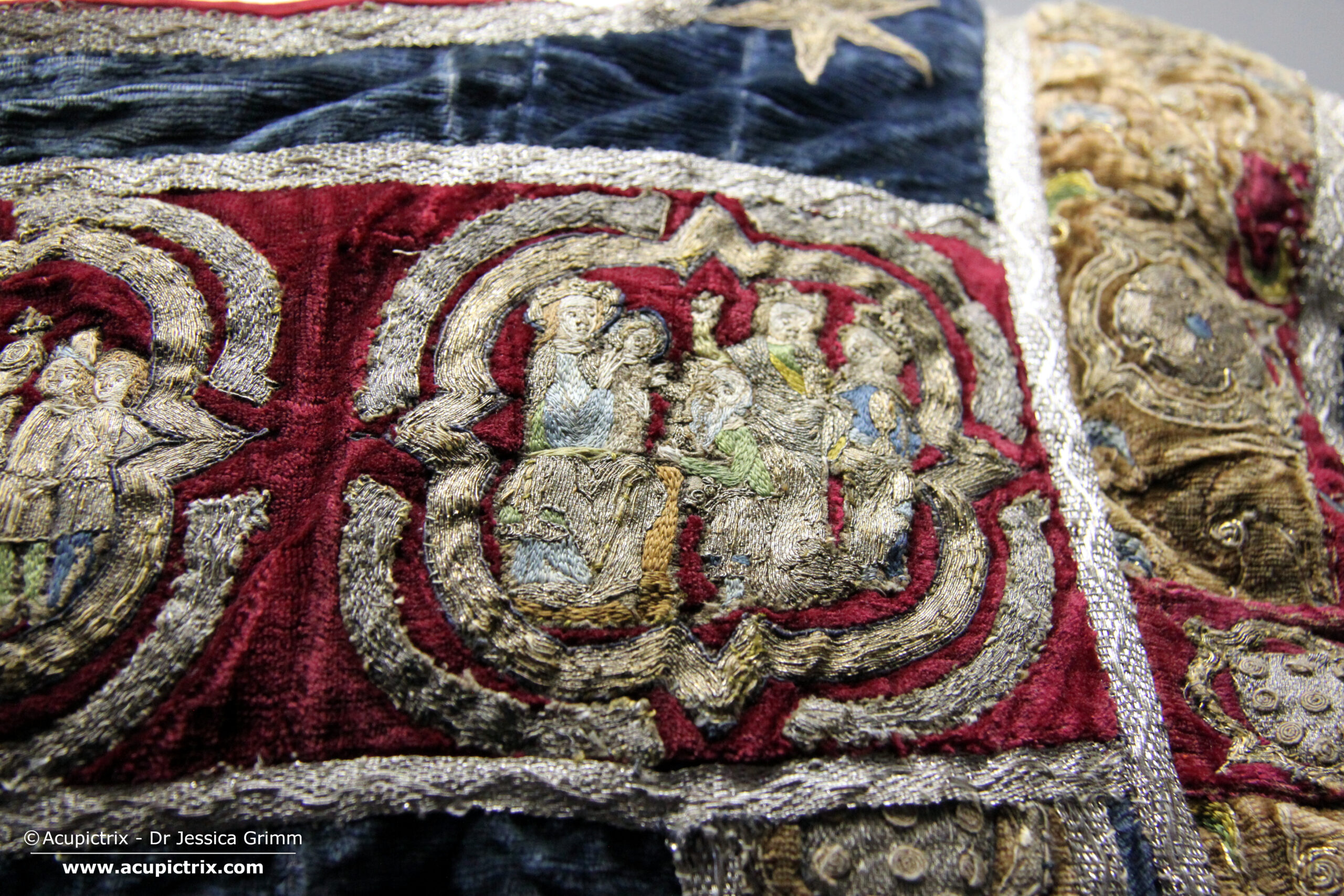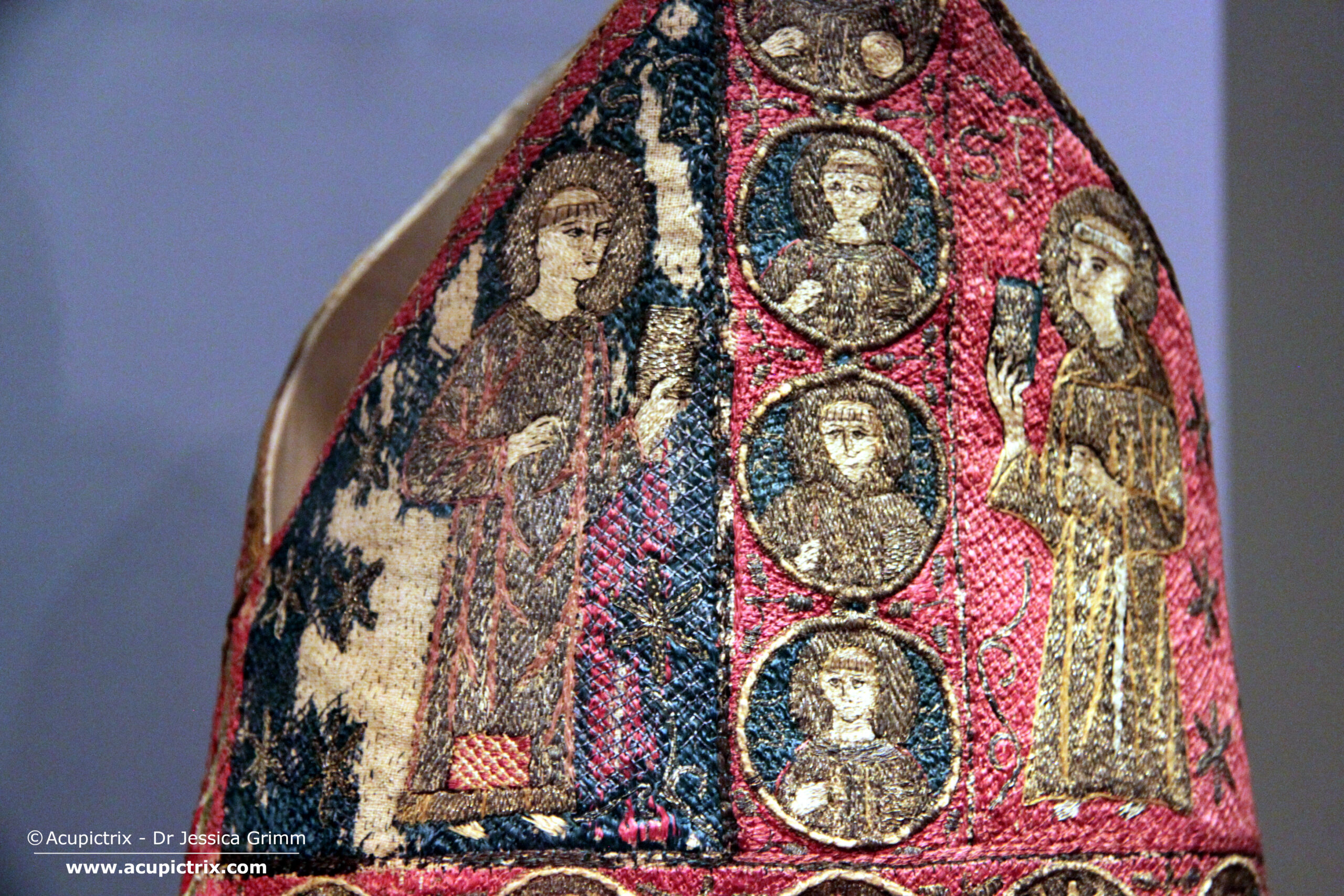It never ceases to amaze me that, after having studied medieval goldwork embroidery for quite some time now, I still find spectacular pieces that I had never previously heard of. Casual references in the literature lead me to obscure, tiny museums that happen to house a real treasure. The original authors, mostly late 19th- and early 20th-century, raved about these pieces. And rightly so! But for one reason or another, these pieces never made it into our collective knowledge base of medieval goldwork embroidery. And that’s a real shame. Today, I am going to point out two spectacular pieces to you that are kept in small local museums near the major cities of Aachen and Cologne in Germany. I hope to visit these pieces myself sometime in the coming year. For now, we will explore them by looking at the original literature.

The first piece is an antependium from the Cistercian Abbey Kamp (established AD 1123). It was made in Cologne between 1360 and 1370. The central depiction shows the Coronation of Mary. Under three arcades on either side, we see pairs of saints. From left to right: Bernhard of Clairvaux, Dorothea of Caesarea, Saint Ursula, Saint Agnes, Mary Magdalene, Catherine of Alexandria, Saint John, John the Baptist, Saint Peter, Saint Paul, James the Greater and a saintly abbot. The antependium is about 75 cm high and 258 cm wide. The fringe is not original.

To the right of Christ, a small kneeling figure can be made out. As he wears a Cistercian habit, this figure likely represents the donor of the embroidery. Likely a Cistercian monk from Kamp Abbey. Unfortunately, the banderole he is holding is illegible, and it is thus impossible to identify this donor further.
The embroidery consists of couched pairs of gold thread on green velvet. The figures are embroidered on linen and then appliqued onto the green velvet. The figures are mainly stitched in couched gold with very little silk embroidery. The stitches used are directional split stitch, satin stitch, and knots. The knots are used to stitch the hair of the angels in the central Coronation scene. One angel swings a censer, and the two others play musical instruments. Just like the ones seen on the green chasuble from Dommuseum Frankfurt, which were also made in Cologne.


The next piece I want to draw your attention to is a set of vestments from St Johann church in Burtscheid (click the link for a colour picture!). Burtscheid Abbey was a Benedictine monastery founded in AD 997 by Emperor Otto III. The set of vestments consists of a chasuble, a dalmatic, a tunicella, a stola and three maniples. The late 14th-century embroideries have been taken from their original vestment(s) and reconfigured onto this newer set of vestments. In all, there are 61 embroidered medallions depicting scenes from the Old and New Testaments. Maybe all the scenes were once part of a single bell chasuble or a cope. Just like you see on the famous English copes from the 14th century (for instance: V&A 175-1889, the Butler-Bowden cope and the Vic cope).

Here you see three scenes from the dalmatic. From left to right: Circumcision, Christ being despised and the Adoration of the Magi. The designs are reminiscent of miniature paintings in the illuminated manuscripts of the time. The embroidery is comparable to that seen on the antependium from Kamp Abbey. The figures are mainly couched in gold thread, with some details stitched in coloured silks. It is believed that these embroideries were also made in Cologne.
You can find more pictures in the literature below. Some articles are in the public domain and can be downloaded for free. We will revisit these spectacular goldwork embroideries in the future.
Literature
Czymmek, S. (1980): Kat. C 8. In Kaspar Elm, Peter Joerißen, Hermann Josef Roth (Eds.): Die Zisterzienser. Ordensleben zwischen Ideal und Wirklichkeit. Bonn (Schriften des Rheinischen Museumsamtes, 10), pp. 452–456.
Jaques, R. (1956): Die Wiederherstellung des gestickten Antependiums der ehemaligen Abteikirche Kamp (Kreis Moers). In Jahrbuch der rheinischen Denkmalpflege in Nord-Rheinland 20, pp. 321–325.
Maier, A. R. (1916): Der Kirchenschatz der ehemaligen Abteikirche St. Johann in Burtscheid. In Aachener Kunstblätter 9/10, pp. 49–100. You can find a free download here.
Reichert, L. (1937): Spätgotische Stickereien am Niederrhein. Bonn: Ludwig Röhrscheid.
Schnütgen, A. (1888): Besticktes Antependium, rheinisch erste Hälfte XIV. Jahrhunderts. In Zeitschrift für christliche Kunst 1 (4), pp. 123–132. You can find a free download here.



0 Comments